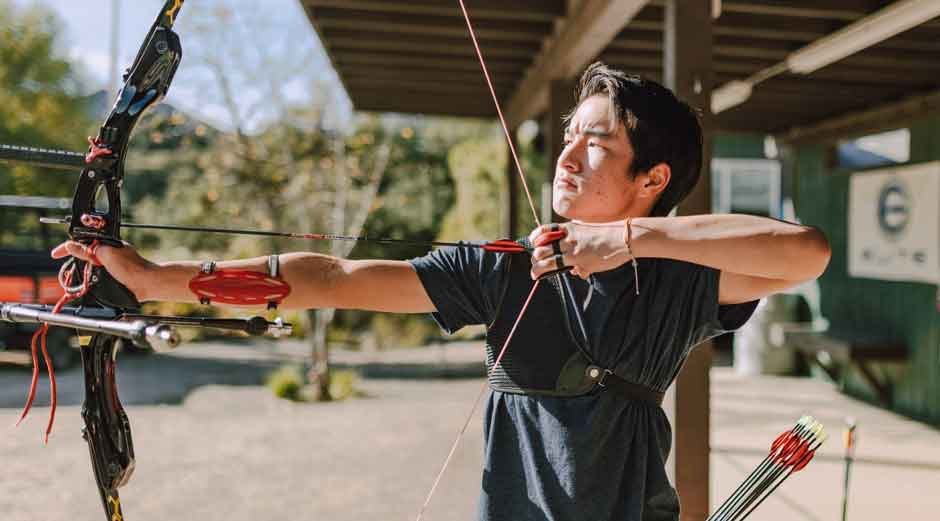Archery demands a blend of physical stamina, mental sharpness, patience, and unwavering focus, alongside both mental and physical endurance. Enhancing archery skills often involves dedicated body training that cultivates the archer’s capacity to sustain a steady stance, execute a controlled draw and release, and amplify their strength and balance. This, in turn, allows the archer to harness superior force and unwavering steadiness throughout the entire shot sequence. Here, we present key archery exercises meticulously designed to enhance the efficacy of your archery regimen.
Methods to Improve Your Archery Practice
1. Plank Holds for Core Stability
It’s important to have a solid mental, physical, and core foundation in archery. To shoot accurately and consistently, an archer needs a solid foundation to launch their arrows. The plank hold is one of the best workouts to strengthen the abdominal muscles. This isometric workout strengthens the lower back, oblique, and deep abdominal muscles. By incorporating and perfecting plank workouts, archers increase their physical endurance and ensure that their core is always stable, particularly at the most crucial draw, aim, and release periods.
2. Resistance Band Pulls for Drawing Strength
To draw a bow effectively requires special coordination of shoulder, back, and arm power. Targeted workouts, like resistance band pulls, are ideal for helping archers become ready for this specific motion. Archers can train for the same motion and stress of drawing a bowstring by grasping a resistance band with both hands and slowly pushing it apart. The drawing technique can be improved, and the corresponding muscle groups can be strengthened by regular practice of this activity. This allows archers to draw with more force, easily control larger bows, and consistently accomplish a smooth and powerful release.
3. Dumbbell Wrist Curls for Steady Hand Control
A steady hand is crucial in the complex art of archery, where missing the target is more often than making a direct strike. The forearm muscles, which control grip and wrist motion, are crucial to this steadiness. These muscles can be strengthened by doing dumbbell wrist curls in reverse and normal motion. Archers can gradually increase their grip strength and wrist resilience by grabbing a dumbbell and flexing the wrist in a series of upward and downward movements. This specific muscle training results in enhanced bow control and improves the archer’s aim and release accuracy.
4. Shoulder Rotator Cuff Exercises for Injury Prevention
The shoulder area, particularly the rotator cuff muscles, is tense when archery is practiced. Because these muscles are constantly being used to pull and then release, they are prone to overuse injuries because of the repeated nature of the activities. Archers should concentrate on strengthening workouts that especially target the rotator cuff to reduce their likelihood of experiencing this injury. Exercises such as external rotations, as well as shoulder ‘T’s and ‘Y’s,’ can be very effective if performed with the assistance of apparatus such as light weights or resistance bands. By consistently including these exercises in an archer’s exercise routine, the archer will develop a stronger rotator cuff, improving their shot power and dramatically reducing the likelihood of sustaining an injury to their shoulder.
5. Balance Drills for Improved Stance
Archery is as much about mental focus as it is about physical prowess, and central to this balance is a stable and confident posture. Archery training emphasizes the importance of grounding oneself, ensuring that every shot is built upon a rock-solid foundation. While many may overlook the significance of posture, dedicated training sessions can highlight its pivotal role in achieving consistent accuracy. By incorporating exercises that enhance balance and core strength, archers can truly hone their technique. This holistic approach to training ensures that when the archer stands to take their shot, they do so with unwavering concentration and physical stability, resulting in better performance and accuracy.
Conclusion
Effective archery exercise delves deeper than routine skill practice. By integrating customized physical routines that align with the sport’s demands, archers harmonize body and technique. This approach addresses core stability and balance, fostering a dedicated training regimen that empowers archers. The result is not just improved accuracy but also elevated mastery of their craft, achieved through the synergy of refined technique and a honed physique.






